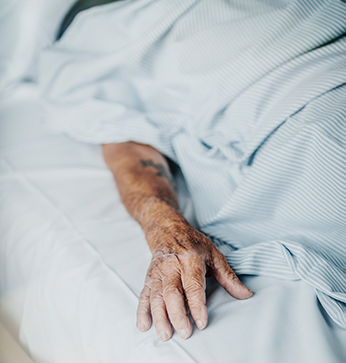

Risk & Skin assessment
Risk assessment
The individual’s risk of developing pressure ulcers must be assessed as soon as possible after arrival at care and then regularly, in the event of changes in the state of health, and before discharge(1). For those individuals who are judged to have an increased risk of developing pressure ulcers, an individual nursing plan must be drawn up. For all risk patients, preventive measures must be taken and an individual care plan drawn up in the patient’s medical record. The care plan must describe goals, planned measures and the result must be described and evaluated(1)(2).
Read more about this in our pressure ulcer action plan.
Skin assessment
A skin assessment must be carried out as part of the risk assessment (1)(2). A skin assessment must be carried out quickly and be a high-priority task at the beginning of a care period, regardless of whether the person is in a care facility or cared for in their own home.
Carry out the skin assessment from “head-to-toe” with special focus on bone spurs. Inspect skin areas that come into contact with medical equipment as these can cause pressure sores. The assessment is repeated daily on people at risk of pressure ulcers. The skin must also be assessed based on signs of dryness, eczema, skin cracks and maceration (1)(2).
When pain or discomfort occurs when lying or sitting down, our brain sends out warning signals that we should move from the position.

References
(1) European Pressure Ulcer Advisory Panel, National Pressure Injury Advisory Panel and Pan Pacific Pressure Injury Alliance. Prevention and Treatment of Pressure Ulcers/Injuries: Quick Reference Guide. Emily Haesler (Ed.). EPUAP/NPIAP/PPPIA: 2019
(2) European Pressure Ulcer Advisory Panel, National Pressure Injury Advisory Panel and Pan Pacific Pressure Injury Alliance. Prevention and Treatment of Pressure Ulcers/Injuries: Clinical Practice Guideline. The international Guideline. Emily Haesler (Ed.). EPUAP/NPIAP/PPPIA: 2019